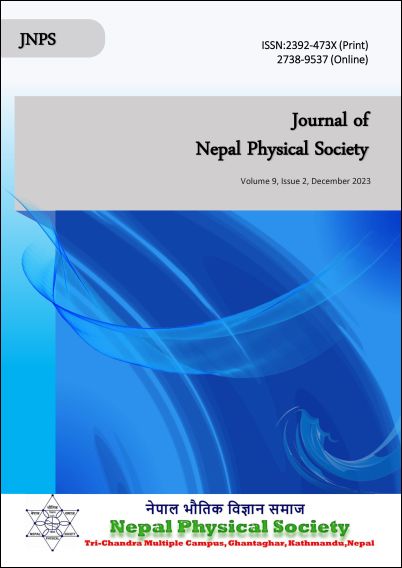Study of Natural Background Radiation in Bagmati Province, Nepal
DOI:
https://doi.org/10.3126/jnphyssoc.v9i2.62405Keywords:
Background radiation, Bagmati Province, Annual Effective doseAbstract
In this research, we explored the influence of natural sources on ambient radiation levels in the surrounding environment. Our investigation involved conducting a comprehensive survey of background radiation across seven districts in the Bagmati province. We utilized a Radalert 100 radiation monitor to measure the background dose rate at 141 different locations. The recorded background ionizing radiation at these sites varied from 0.022 mR/hr to 0.028 mR/hr, averaging at 0.025 mR/hr. The mean dose rate was determined to 2.129 ± 0.172 mSv/y. Subsequently, the obtained dose rates were used to compute the Annual Effective Dose equivalent (AEDE) for the local population, revealing values ranging from 0.240 mSv/yr to 0.294 mSv/yr, with an average of 0.270 mSv/yr. Significantly, these AEDE values exceeded the International Commission for Radiation Protection (ICRP) limit of annual effective dose (1mSv/yr) recommended for the general public. The elevated AEDE levels are likely attributed to the geological characteristics and rock formation in the study area. Despite the higher AEDE, it is important to note that our overall findings suggests no substantial radiological hazard to the public in the study regions.
Downloads
Downloads
Published
How to Cite
Issue
Section
License
All right reserved. No part of this Journal may be reproduced in any form or by any electronic or mechanical means, including information storage and retrieval system, without permission in writing from the publisher, except by a reviewer who may quote brief passage in a review. The views and interpretation in this journal are those of author(s) and they are not attributable to the NPS.




